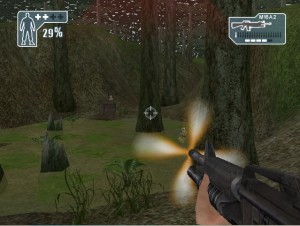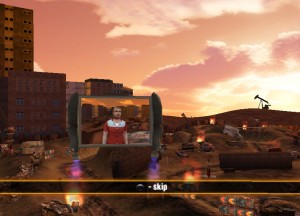Lost game – 2 Days to Vegas
2 Days To Vegas was a concept developed by Steel Monkeys initially for PS2 around 2003/2004. Mostly influenced by Grand Theft Auto it was crime themed with vehicles and characters. First pitched as a third person game, it was reduced to first person because of animation cost.
The game was ambitious planned with a brand new engine, new editor, new fx, voice overs, multi-layer streaming audio, and much more.
With perhaps 6 senior programmers assigned to tech, some things were technically very good indeed. The editor was what would become a standard editor in the PS3/360 era – an interface to a running instance of the game – where the designer could just ‘drop in’ objects, assign them physics, etc. I wrote what was called the ‘XML transport layer’ – the editor could request all sorts of information from the game runtime, and then inject all sorts of things back. This used TCP/IP (using the PS2 network adaptor) for live work, but the instruction sequence could be ‘baked down’ to files so levels were constructed using the same code-path when the editor wasn’t present.
Unfortunately only 2 coders or so over that time period were assigned to gameplay.. coupled with some poor art assets and limited design resources the demo designed to pitch the game at E3 that year just wasn’t very playable. Publishers are rarely interested in tech alone with a good game to go with it, and this demo was all tech, no game! The game wasn’t picked up and the company folded a month later (ironically the game improved a lot in that last month – but too late!)
















Recent Comments